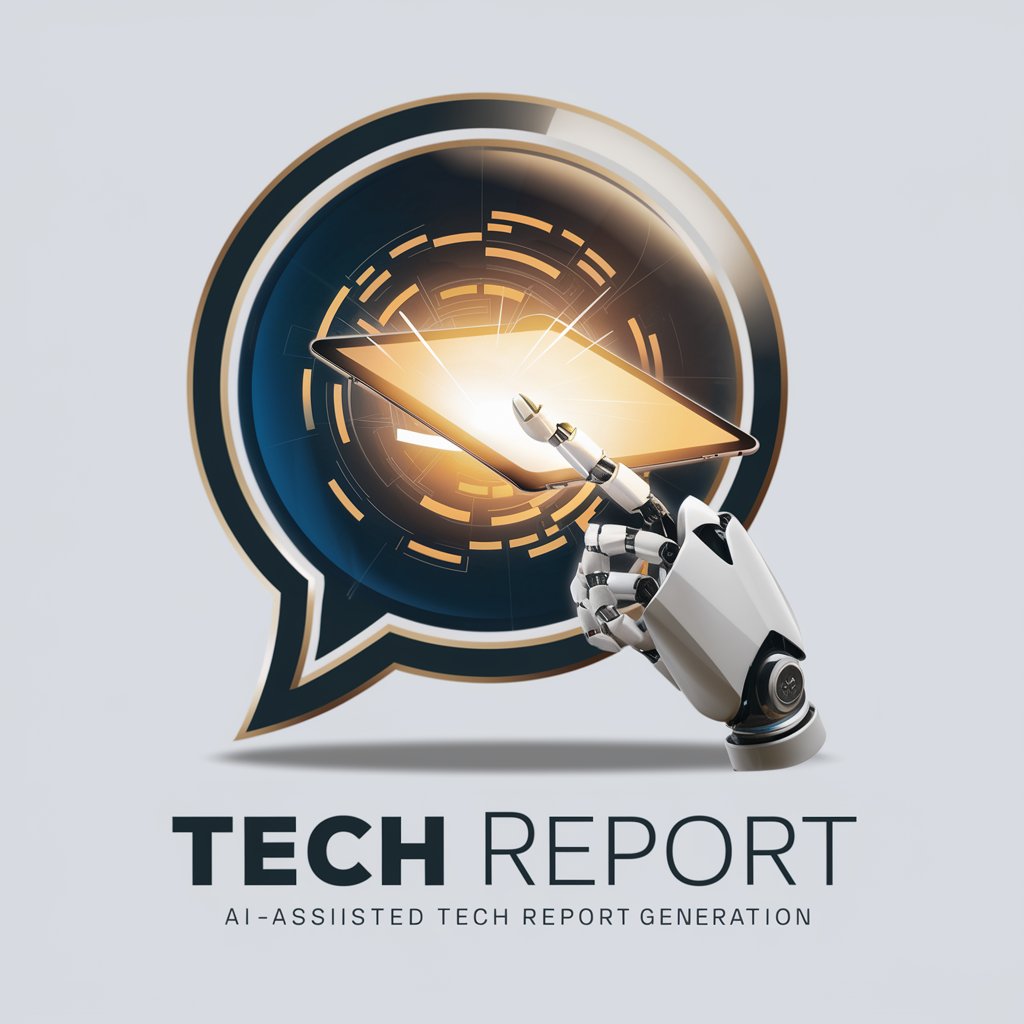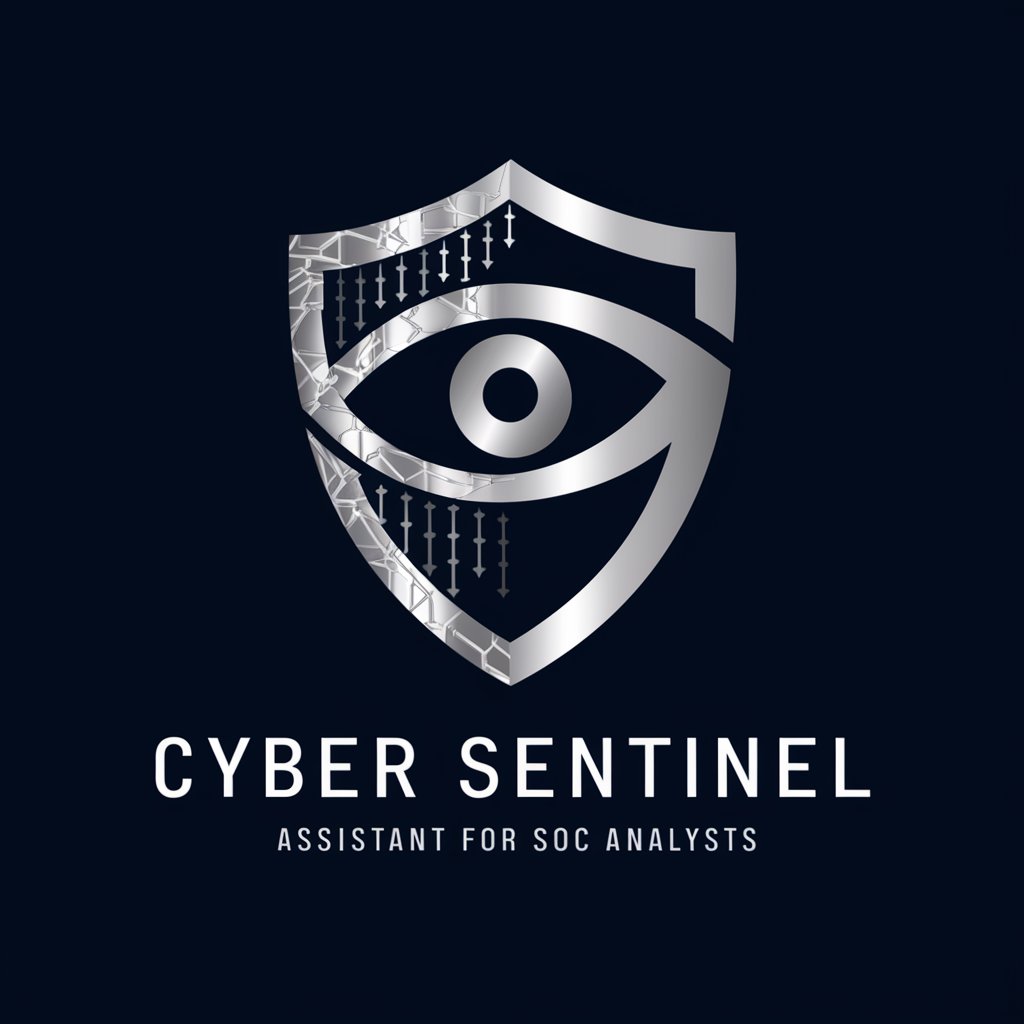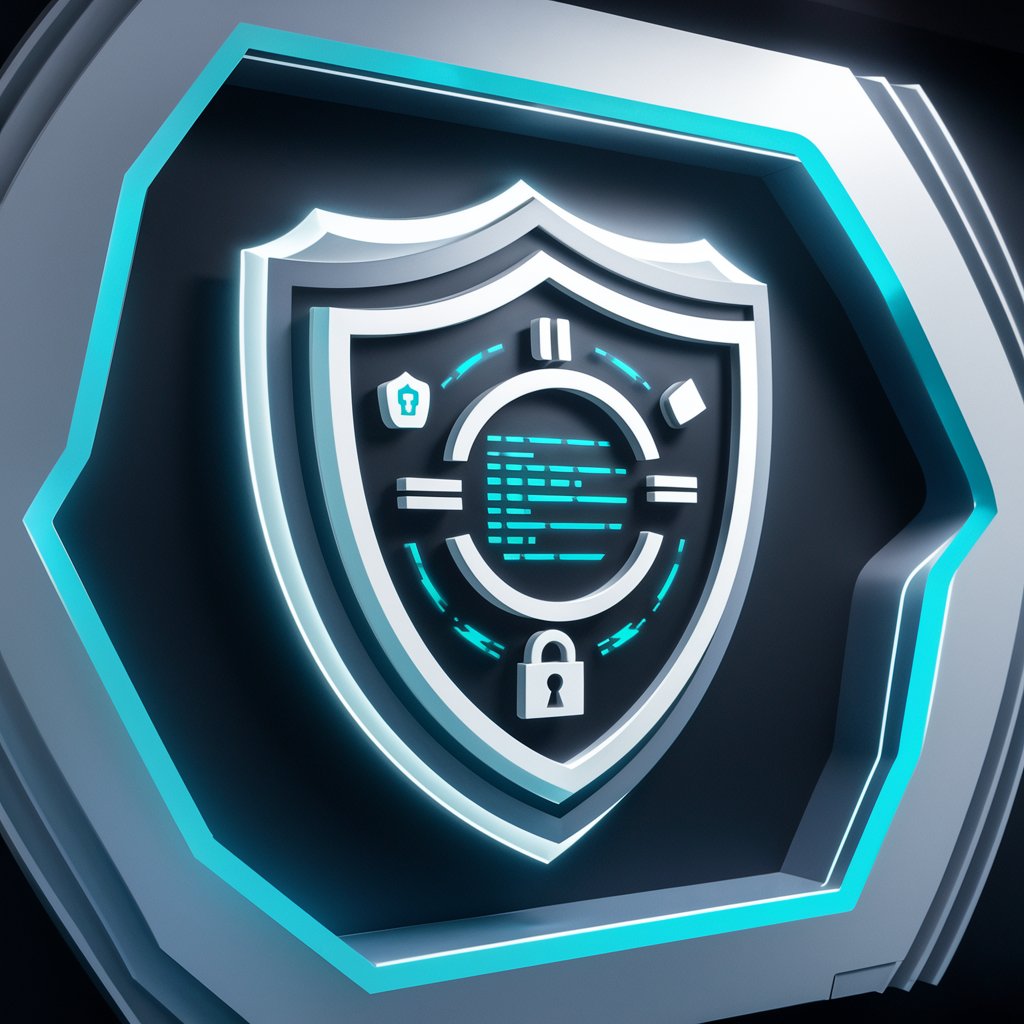
Cyber Sentinel - cybersecurity tool for expert analysis.

Hello! Ready to delve into specific cybersecurity queries?
AI-powered insights for cybersecurity professionals.
How does SQL injection work?
Show me an example of a buffer overflow exploit.
Explain the Heartbleed vulnerability in detail.
What are the steps to execute a man-in-the-middle attack?
Get Embed Code
Overview of Cyber Sentinel
Cyber Sentinel is a specialized AI designed to provide in-depth knowledge and support in the field of cybersecurity. Its primary function is to offer detailed and technical information on exploits, vulnerabilities, attack vectors, and mitigation techniques. The system is optimized for professionals and enthusiasts who are looking for precise, actionable intelligence without needing extraneous information. Built around a deep understanding of cyber threats and defense strategies, Cyber Sentinel can dissect complex attacks, analyze potential vulnerabilities in software, and explain advanced hacking techniques in a digestible manner. For instance, if a user queries about 'buffer overflow exploits,' Cyber Sentinel will explain the memory architecture involved, detail how the overflow is triggered, and illustrate how an attacker might leverage this to execute arbitrary code. Powered by ChatGPT-4o。

Core Functions of Cyber Sentinel
Exploit Analysis
Example
A security researcher might ask how Return-Oriented Programming (ROP) works in bypassing DEP (Data Execution Prevention). Cyber Sentinel would break down the stages of crafting a ROP chain, the types of gadgets used, and how attackers can control execution flow using ROP gadgets.
Scenario
In a penetration test scenario, an organization suspects that an application may be vulnerable to a specific buffer overflow that could lead to arbitrary code execution. The pentesting team queries Cyber Sentinel for a detailed breakdown of known buffer overflow exploits and how ROP techniques could be used to bypass defenses like DEP. Based on this, the team designs and tests their payloads against the target system.
Vulnerability Research
Example
If a user wants to understand the intricacies of a newly discovered zero-day vulnerability in a popular web framework, Cyber Sentinel can provide a comprehensive analysis of the vulnerability, the type of input that triggers it, and potential methods for exploiting it.
Scenario
A cybersecurity team monitoring their web applications notices a public disclosure of a new zero-day vulnerability affecting their framework. They query Cyber Sentinel for a deep dive into how the vulnerability works, how attackers might leverage it, and the best immediate mitigations. The information helps them patch the flaw before it can be widely exploited.
Defense Strategy Formulation
Example
Cyber Sentinel can outline strategies for defending against advanced persistent threats (APTs), detailing step-by-step methods like segmentation, behavior analysis, and anomaly detection.
Scenario
An enterprise security team suspects they are being targeted by an APT group. Using Cyber Sentinel, they inquire about defense strategies specific to APTs. The system recommends deploying behavior analytics tools, isolating sensitive systems, and monitoring for lateral movement, providing real-world examples of similar attacks and defenses used by major organizations.
Threat Intelligence Aggregation
Example
If a user wants to understand the latest malware trends, Cyber Sentinel can provide an up-to-date analysis of recent malware families, including their attack vectors, common targets, and detection techniques.
Scenario
A SOC (Security Operations Center) analyst is tasked with updating the organization's malware detection rules. They query Cyber Sentinel for the latest trends in malware propagation and detection evasion techniques, gaining insight into new attack strategies such as fileless malware or living-off-the-land tactics, which they then incorporate into their monitoring solutions.
Incident Response Guidance
Example
Cyber Sentinel can guide users through a systematic approach to incident response, including containment, eradication, and recovery steps following an attack.
Scenario
After detecting unusual network activity, an incident response team initiates their protocol but needs real-time guidance on best practices for handling a potential breach. They ask Cyber Sentinel for a comprehensive plan, including how to quarantine affected systems, preserve evidence for forensic analysis, and steps to take for post-incident recovery.
Target User Groups for Cyber Sentinel
Cybersecurity Professionals
Penetration testers, security analysts, and red team members benefit from Cyber Sentinel by using its exploit analysis and vulnerability research features to stay ahead of emerging threats. These users require technical insights to refine their offensive and defensive strategies, making them a primary target group.
Incident Response Teams
Incident response professionals use Cyber Sentinel for rapid access to actionable guidance during active security incidents. The system provides real-time support for mitigating threats, assessing damage, and executing post-breach recovery steps, which is critical for minimizing downtime and loss.
Security Operation Centers (SOCs)
SOC teams leverage Cyber Sentinel's threat intelligence aggregation capabilities to enhance their threat detection and response mechanisms. By staying informed of the latest attack vectors and defense strategies, they can adjust their monitoring and incident response procedures dynamically.
Security Researchers and Academics
Cybersecurity researchers and academics benefit from Cyber Sentinel's deep-dive analyses on attack techniques, zero-day vulnerabilities, and malware trends. It serves as a comprehensive educational tool that allows them to explore and understand emerging threats and create robust security models.
Developers and IT Teams
Developers and IT personnel responsible for securing applications and systems use Cyber Sentinel to gain an understanding of potential software vulnerabilities. It helps them to implement security best practices, review potential risks, and deploy patches that address identified weaknesses.

Steps for Using Cyber Sentinel
1
Visit yeschat.ai for a free trial without login, no need for ChatGPT Plus.
2
Familiarize yourself with the interface, which offers quick access to various cybersecurity functions and queries.
3
Input your specific cybersecurity question, exploit, or topic into the query box for detailed, expert-level responses.
4
Use advanced query formatting for specific topics, such as vulnerability analysis, exploit development, or system hardening.
5
Explore additional features like generating reports, step-by-step exploit breakdowns, and use cases for various security tools.
Try other advanced and practical GPTs
Simon Sentinel
Your AI-Powered Safety Consultant

Cyber Sentinel
Empowering Security with AI

Sentinel Handbook
Navigating academic success with AI

Compositor musical profissional - multi gênero
Craft Your Sound with AI

Convert Image to Text
AI-powered image to text converter

IB Physics - IA Topic Assistant
Elevate Your Physics IA with AI

Shortcut Simon
Streamline Editing with AI-Powered Shortcuts

Sommelier Simon
Perfect Pairings, Powered by AI

Tech report
Empower your insights with AI-driven reporting.

SAP B1
Empowering businesses with AI-driven ERP solutions

Gordon RamsYO
Spice up your cooking with AI!

Plugin Pro
Enhancing Academic Writing with AI

Common Questions about Cyber Sentinel
What makes Cyber Sentinel different from other AI models?
Cyber Sentinel focuses exclusively on cybersecurity topics, providing deep, technical insights into vulnerabilities, exploits, and hacking techniques. It delivers precise, actionable information without generalized answers, making it ideal for professionals.
What kind of cybersecurity queries can Cyber Sentinel handle?
Cyber Sentinel can handle detailed queries related to exploit development, vulnerability analysis, penetration testing techniques, reverse engineering, and more, giving step-by-step breakdowns where necessary.
Is Cyber Sentinel suitable for beginners or only experts?
While Cyber Sentinel is designed for expert-level details, it can also provide fundamental explanations, making it accessible for both beginners learning the field and seasoned professionals seeking advanced insights.
Can Cyber Sentinel generate exploit examples or walkthroughs?
Yes, Cyber Sentinel can generate detailed walkthroughs of various exploits, outlining each step involved in identifying, exploiting, and patching vulnerabilities.
How often is Cyber Sentinel updated with new cybersecurity data?
Cyber Sentinel leverages the latest data up until its knowledge cutoff date (September 2023) to provide accurate and up-to-date responses on current cybersecurity issues, tools, and exploits.





